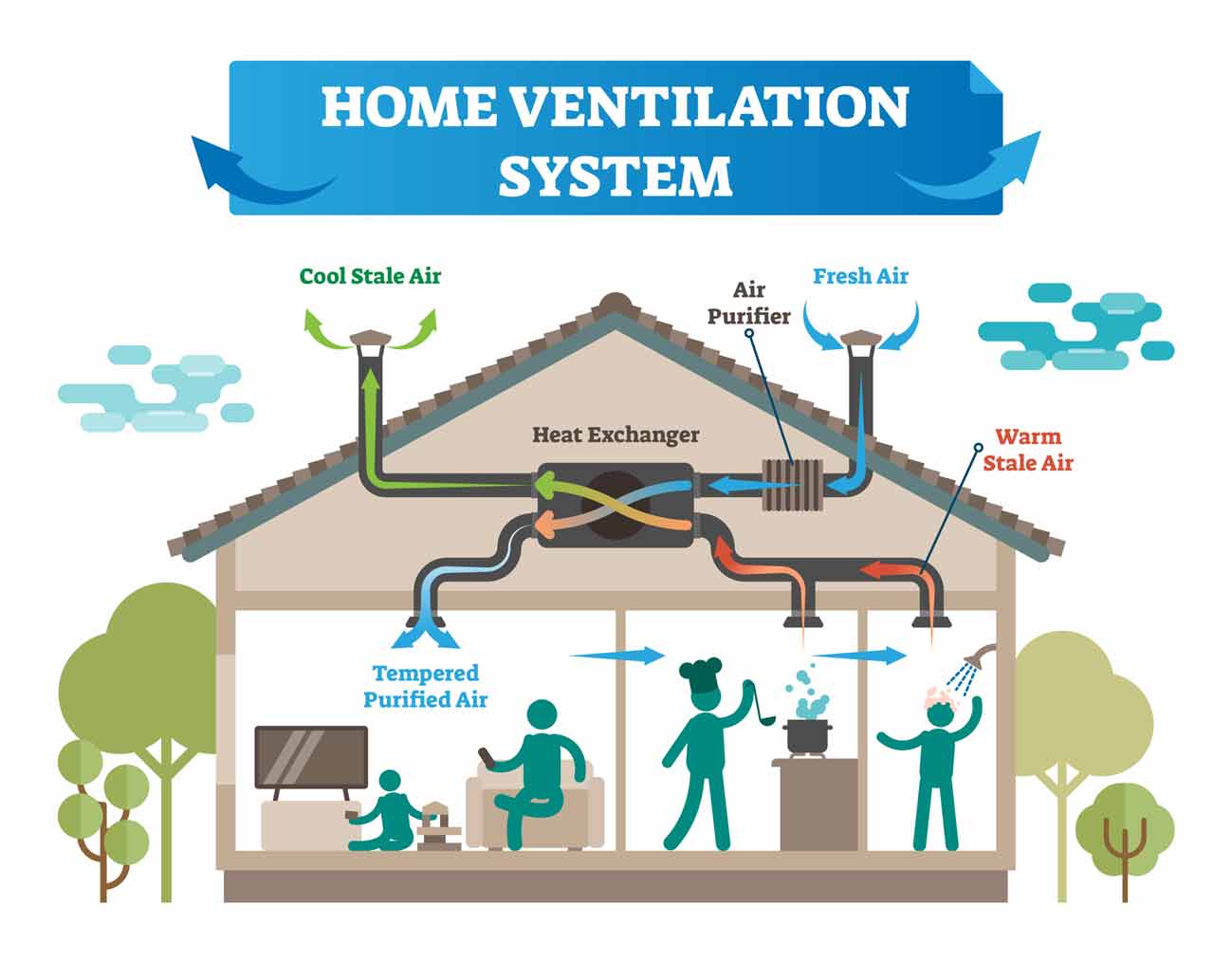HRV Made Easy: Why It Matters
Discovering the Perks of Heat Recovery Ventilation for Power Performance in Houses
Heat Recovery Ventilation (HRV) systems offer house owners a useful approach to enhancing energy performance. By reclaiming warm from outward bound air, these systems can significantly minimize cooling and heating expenses. Additionally, they give a stable supply of fresh air, improving indoor air top quality and convenience levels. As home owners think about sustainable options, recognizing the nuances of HRV systems ends up being progressively crucial. What aspects should one review before making such an investment?
Comprehending Heat Recovery Ventilation Solutions

Exactly How HRV Improves Indoor Air Top Quality

Energy Savings: The Financial Benefits of HRV
Making best use of energy performance, heat recovery ventilation (HRV) systems supply significant monetary benefits for property owners. By recouping and recycling warmth from exhaust air, HRVs substantially minimize cooling and heating expenses. This modern technology can bring about energy savings of up to 30%, depending upon climate and usage patterns. Home owners usually see reduced energy expenses shortly after installment, making HRVs a financially wise financial investment gradually. Additionally, several regions supply motivations or rebates for energy-efficient upgrades, even more improving the economic appeal. As power costs continue to rise, the cost-effectiveness of HRVs becomes progressively clear. On the whole, the unification of HRV systems not just advertises power effectiveness however also contributes to long-lasting monetary cost savings for houses.
The Environmental Influence of Heat Recovery Ventilation
A substantial environmental advantage of heat recovery ventilation (HRV) systems hinges on their capacity to reduce total power intake. By recovering warmth from exhaust air and transferring it to incoming fresh air, HRV systems decrease the need for energy-intensive home heating and cooling methods. This reduction in energy need adds to lower greenhouse he has a good point gas exhausts, as less nonrenewable fuel source is needed to keep click here to read comfy indoor temperatures. In addition, HRV systems improve interior air high quality by effectively exchanging stagnant air with fresh exterior air, reducing dependence on mechanical air conditioning systems that can harm the setting. In general, the application of HRV systems supports lasting living methods and aligns with international efforts to battle environment adjustment by promoting power effectiveness in domestic settings.
Selecting the Right HRV System for Your Home
Exactly how can home owners ensure they choose the right heat recovery ventilation (HRV) system for their needs? They should evaluate their home's dimension and design, as these elements influence airflow requirements. Next off, examining the system's performance ratings is important, as higher rankings suggest far better efficiency and power financial savings. House owners ought to additionally take into consideration setup and maintenance costs, contrasting different brand names and designs for value. In addition, it is very important to examine noise degrees, as some systems run even more silently than others. Consulting with cooling and heating experts can supply tailored suggestions based on specific home conditions. Taking a look at user evaluations and warranties can help in making a notified decision, making sure that the selected HRV system efficiently boosts indoor air high quality and power performance.
Often Asked Concerns

Exactly how Commonly Should I Clean or Keep My HRV System?
The frequency of cleaning or preserving a warm recovery ventilation (HRV) system normally relies on usage and ecological aspects. Generally, it is suggested to execute maintenance every six months to assure peak performance and air quality.

Can HRV Systems Help Minimize Humidity Levels Inside Your Home?
HRV systems can successfully reduce indoor moisture degrees by exchanging stagnant, moist air with fresh, drier air from outdoors. HRV Heat Recovery Ventilation. This procedure helps keep a balanced interior atmosphere, boosting convenience and protecting against moisture-related problems
What Is the Life-span of a Typical HRV System?
The life-span of a common heat recovery ventilation (HRV) system differs, usually lasting between 10 to 15 years. view it Routine maintenance can extend its effectiveness and functional life, making certain peak efficiency throughout its usage period.
Are There Any Noise Worry About HRV Solutions?
Sound problems with HRV systems can emerge, particularly from follower operation. Numerous modern-day systems are made to reduce sound levels, guaranteeing they run quietly while preserving performance, which deals with potential disturbances in living settings.
Can I Mount an HRV System Myself, or Do I Required a Specialist?
The individual contemplated whether to install the heat recovery ventilation (HRV) system personally or employ a professional. Usually, while DIY installment is possible, competence guarantees correct functionality and compliance with regional building regulations, boosting system performance.